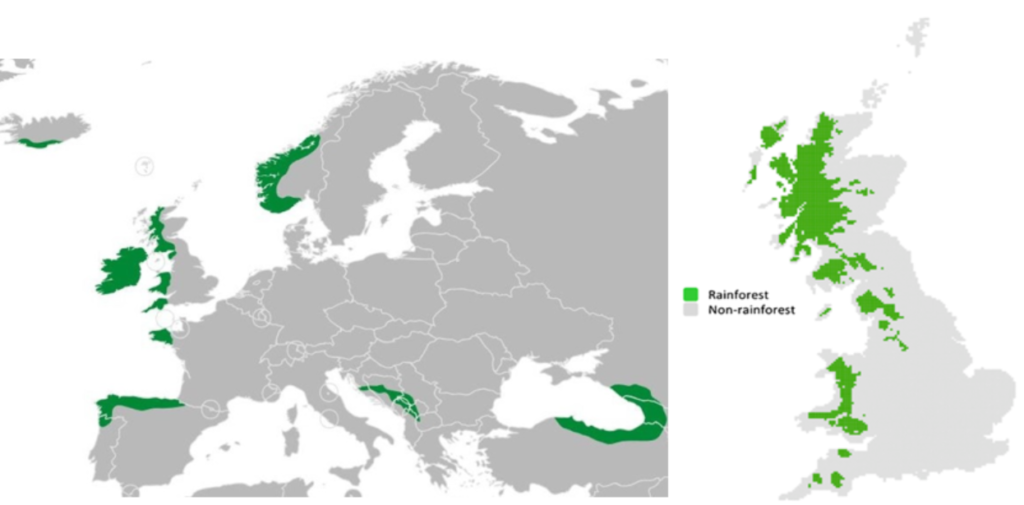Rainforest?! I hear you ask... In the UK?
Temperate rainforest, which is often referred to as Atlantic or Celtic rainforest is globally a very rare habitat. It is defined climatically by consistently mild temperatures and very high rainfall (minimum of 1,400 mm annually). Suitable climate for the formation of this unique habitat occurs across just 1% of the earth’s surface. 15% of which occurs across Europe, and 40% across the British Isles. In the UK we are lucky enough to have suitable rainforest climate across almost 21% of the country.

Climate space suitable for temperate rainforest formation in Europe and the UK.
Historically, the decline of temperate rainforest has been attributed to deforestation for land conversion and under or mismanagement. This specialised habitat in the UK continues to face threats from overgrazing by deer, invasive Rhododendron (Rhododendron ponticum) and ash (Fraxinus excelsior). It now also faces a new threat from climate change, which is altering the stable climatic conditions required by the rainforests.
Why are they important?
Ecologically, temperate rainforest is characterised by a unique assemblage of epiphytic bryophytes and lichens; inclusive of rich communities of Lobaria. The UK has sole international conservation responsibility for the protection of many of these lichens, as their distribution outside the UK is limited. Scotland is home to some of the best remaining examples of temperate rainforest within Europe, and these are of international importance for conservation. Yet it is threatened by the ever-growing climate crisis.
Epiphytic lichens and bryophytes will be affected by changes in humidity and temperature resulting from climate change. They are predicted to lose a substantial portion of their rainforest habitat by 2050; due to contraction of the eastern extent of their suitable climatic range. This leaves little to no suitable climate space available and nowhere for these organisms to migrate to. Without this space; the fate of these exceptional organism remains uncertain.
